Here’s a quote from Dr. James Di Nicolantonio that, barring unforeseen injuries or illness, is spot on and exactly aligned with the Age Free Strength mindset.
“The beauty of being in good shape is that you earned it. It cannot be handed down like a business or wealth. No one puts in the work except you. It’s the ultimate form of self-care and respect”
Consistency
Building and maintaining strength and vitality, as we age, requires a positive attitude, dedicated and ‘appropriate’ effort, a lot of consistency and a willingness to learn and adapt.

Consistency is the key ingredient. It’s not about quick fixes or temporary solutions, but rather a commitment to a healthy and active lifestyle that lasts a lifetime. It’s about making a conscious choice every day to prioritize your well-being and invest in yourself.
But what does consistency really mean? It means showing up for yourself, both physically and mentally, day in and day out. It means dedicating time to exercise regularly, fueling your body with nutritious food, and prioritizing self-care.
Consistency is about creating positive habits that become second nature and engrained in your daily routine.
Of course, staying consistent can sometimes be a challenge. Life gets busy, unexpected obstacles arise, and motivation may ebb and flow. That’s why it’s important to find strategies that work for you, so you enjoy your journey towards strength and vitality – this is what Age Free Strength is all about.
Before we venture into workouts and programs, please make sure you get medical clearance, especially if you are new to resistance training or coming back to it after a long lay-off.
Lets Start the Journey – Strength Training As We Age
At Age Free Strength, we will teach you how to exercise safely, while building and maintaining strength, muscle and mobility.
With our portable equipment we apply exercise science principles to our workouts – whether you are at home, in a hotel room or a campsite.
This post sets the scene for all future posts, with the ‘science’ explained in simple terms and for the Members only workout routines. Stick with it and you will reap the benefits.
This post is an introduction to strength training as we age, but it is applicable to men and women of all age groups.
Become a Member to experience our Optimal Exercises and Routines.
The Myths
The Strength and Muscle Industry, much like numerous other industries, is long overdue for a disruption. The vast expanse of the internet and countless magazines inundate us with dogma, fitness ‘influencers’ and unrealistic outcomes – driven by the intent of garnering attention or maximizing financial gains.
This dogma includes:
- You must lift with heavy weights and do compound (multi-joint) exercises to get strong and build muscle
- Compound exercises are better for building strength and muscle growth than isolation (single joint) exercises
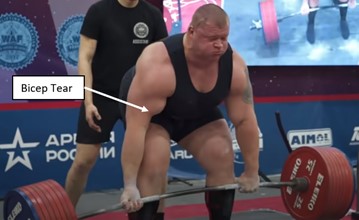
There is a lot more exercise dogma that we will delve into in future posts but, for this introduction, let’s address the above points.
Lifting with Heavy Weights and Compound Exercises
Of all the exercise dogma, this one is the most prevalent. It is also a cause of exercise related injuries.
Before moving on - there is nothing 'wrong' with heavy compound exercises if your goal has a 'powerlifting' focus. All exercise varieties, all workout types and all programs work to some degree, providing consistency, correct form and recovery is maintained - but not all are suitable for the purpose.
If you are maturing with age (or not) and your goal is to build strength and muscle, without injury, you do not need to lift ‘heavy’; or go all out to failure on every set; or predominately do compound exercises; or use traditional barbells, benches or commercial gym equipment.
There is a well-known quote from Lee Haney, 8 times Mr. Olympia (his last win in 1991) –“stimulate, don’t annihilate”. Born in 1959, Lee is one of the few famous bodybuilders that is relatively injury free, in great shape and still working out (Lee is the same age as me).
For the purposes of this website, heavy lifting is defined as a resistance that limits a ‘set’ to 1 to 5 repetitions (reps) and stopping when you cannot do another rep with perfect form.
At Age Free Strength, we will teach you how to make a moderate resistance 'feel' heavy as a pathway to lose fat, improve body composition, increase strength and build muscle - safely. Our 15 to 40 minute workouts can be done anywhere, with portable equipment that weighs 5kg in total and can fit into an average sized backpack.
Five of the common compound exercises are listed below (there are more), most of which come with injury risk, none of which provide optimal target muscle activation while all require relatively heavy weights to adequately stimulate the primary muscles involved.
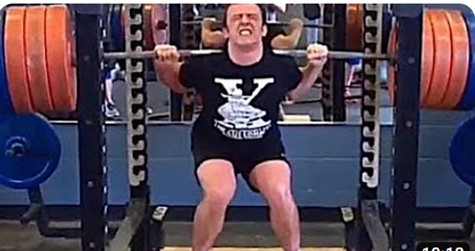
- Barbell Squat – mostly for quadriceps and glutes
- Barbell Deadlift – mostly for glutes, hamstrings and lower back (the lower portion of the erector spinae which runs up the entire back)
- Barbell Bench Press – mostly for the chest (pectorals)
- Barbell or Dumbbell Overhead Press – mostly for the shoulders (deltoids) – see this post for insights into the overhead press and optimal shoulder exercises
- Barbell Bent Over Row – mostly for the back (latissimus dorsi and middle trapezius)
In future posts we will summarize these and many more exercises from a bio-mechanics / anatomical motion, physics and neurology perspective and then provide optimal exercise options with moderate weight resistance.
For example, the Barbell Bench Press is one exercise almost everyone does or has done in the gym or at home and is generally considered the best chest exercise.
The heavy barbell bench press is a classic case of exercise dogma and does not make it into our optimal exercises list.
When you look at the pectorals (the primary chest muscle is the pectoralis major – there is a pectoralis minor) in terms of the origin, insertion and muscle fiber directions you will see that the function of the pectorals is to move the arms in front and across the chest.
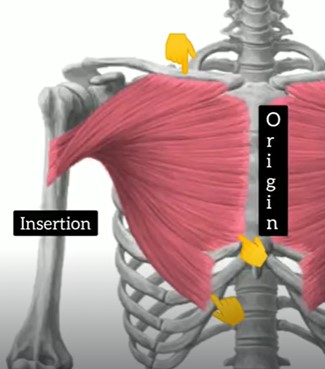
In the image above you see that there is one insertion point on the upper arm bone (humerus) and three origin points – the clavicular (under the collar bone), the sternal (down the sternum) and the costal (lower rib cartilage). The sternal origin houses by far the majority of fibers.
As you raise your upper arm towards shoulder level all fibers run horizontal and, mostly, angled downwards.
All muscles ‘pull’ from their insertion towards their origin. To optimally load a target muscle, with joint safety, the following principles apply:
- The exercise motion must align with the insertion to origin motion in the direction of the majority of the muscle fibers (biomechanics)
- The resistance curve, ideally, should match the muscle strength curve – with muscles having a greater contraction capacity in their lengthened position the resistance should ideally be higher in the first 40% of a full range of motion (physics, exercise selection and exercise form).
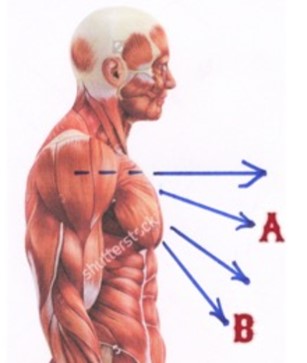
In the image above you see that the optimal motion, to engage the majority of fibers, is down between the ‘A’ and ‘B’ arrows. Neither a flat, or even less so, an incline bench press, provide the optimal anatomical motion.
Exercises where the arms move, relative to the torso, between the ‘A’ and ‘B’ arrows and from out to in is the optimal motion. These would be a decline dumbbell bench press (in the gym) or, in our case with our minimal equipment, a cable and/or resistance bands converging press, where the correct arm motion relative to the torso is achieved (see example super-set below).
With the barbell bench press the hands are locked in position and therefore cannot move across the chest. If oil were placed on the bar the hands would tend to slide apart, not towards each other. This results in a ‘less than ideal” anatomical motion with an unnatural strain on the shoulder joint.
Shoulder joint pain or injury are a common by-product of heavy barbell bench presses.
So, what chest exercises do we recommend at Age Free Strength?
- A converging cable press (Unitree Pumps are in our recommended equipment) with the hands a bit wider than shoulder width and with the movement starting just below the collar bone and finishing with the hands together just above the sternum
- A decline dumbbell press if you have the equipment. Note that the focus of Age Free Strength is exercising while travelling, vehicle touring and camping and we do not go into a lot of detail with typical gym weights and equipment
- Resistance bands with the movement as per the number 1 option above. Note that although bands do not provide the optimal resistance curve (resistance increases through the range of motion as the band stretches) they do provide the correct anatomical motion, which can make an adequate substitute or partner exercise
- Bodyweight pushups as a pre-exhaustion and/or finisher exercise (see ‘protocols’ below)
Not an Affiliate link
Compound Exercises verses Isolation Exercises
At Age Free Strength not all of our optimal exercises or our preferred exercise options are purely isolation exercises, however, all of our exercises are ‘optimal’ due to the anatomical motion, safety, efficiency and effectiveness.
It’s important to understand the difference between ‘lifting heavy weights’ and ‘optimally loading a target muscle’.
An individual muscle can be loaded MORE, with a lighter resistance – if it is not assisted by other muscles, if it has better alignment, if the resistance curve is more ideal, or if a longer ‘lever’ is being used (physics). Conversely, an individual muscle could be loaded LESS during a compound exercise – even though a heavier weight is being lifted – because of these variables.
A person who is unfamiliar with biomechanics might naturally assume that exercises which allow them to lift a heavier weight, would produce more “mass” (i.e., larger muscles). But this is an incorrect assumption.
A muscle that is participating in a compound exercise is being assisted by other muscles (sometimes with conflicting muscle groups), in the lifting of that weight. A unified effort (multiple muscles participating simultaneously in one lift) will naturally allow a heavier weight to be lifted. But, each participating muscle may not be working at its individual maximum capacity.
Often, during a Compound Exercise, a muscle we most want to prioritize is less loaded than a muscle which we do not want to prioritize, due to the mechanics of that particular exercise. However, each muscle can be fully loaded (with spine, joint and ligament safety) and be worked with 100% efficiency, using an isolation exercise – even though the resistance used would be lighter than that used during a compound exercise.
Muscles don’t know what exercise is being done or what weight is being used, they only know what force they need to exert to overcome a resistance. If a lighter weight provides more direct load to a target muscle, then the muscle resisting that load will grow and get stronger.
At Age Free Strength we refer to Doug Brignole’s ‘The Physics of Resistance Exercise’ (which goes into a lot of scientific detail) for many of our optimal exercises, which are a mix of isolation and compound exercises. An objective of this website is to keep the science simple so we will summarize the relevant principles of Doug’s work, hopefully with easy to understand content and where they are directly related to our protocols.
For those of you interested in deep diving into the science we can recommend the following Doug Brignole/Moe Larbi/SmartTraining 365 program links:
The Age Free Strength Workout Protocols
We will go into some detail in the next post with examples in how we workout ‘on the road’ – vehicle touring and camping – with specific equipment. Note that this equipment is all you need for a home gym also.
For this post we will summarize our workout protocols to set the scene.
Making Moderate Weight Resistance ‘Feel’ Heavy
As per the above sections, we do not lift heavy with ‘traditional’ compound exercises, we lift moderately with optimal exercises, some of which are specific compound movements (with a target muscle bias) and some of which are isolation exercises.
Traditional strength training with heavy low repetition (up to 5 reps) compound exercises typically come with long rest periods between sets so that you recover adequately prior to the next set.
Studies show that moderate weights with sets of higher repetitions (e.g., 8 to 20 reps) and shorter rest periods between sets, provide superior muscle growth and ‘adequate’ strength via the activation of both slow and fast twitch muscle fibers.
If your goal is to compete in powerlifting competitions this website may not be for you. If your goal is to lose fat and improve body composition while safely building and maintaining muscle, strength, mobility and fitness - anywhere - this website is for you.
How do we make moderate resistance feel heavy and keep our workouts to between 15 and 40 minutes?
The following is an example of our protocols:
- Start our exercise sets with an ‘activation’ set of 12 to 20 reps.
- An activation set acts as both a warmup and the first set, and coupled with short rest periods between sets, will ensure that moderate resistance in the following sets is challenging.
- For our higher volume workouts, we use a ‘Super-set’ protocol with opposing or different muscle groups.
- A superset is 2 muscle group exercises done back-to-back with minimal rest.
- We try to keep our rest between paired muscle group super-sets to less than 2 minutes e.g. complete chest and lats supersets, rest up to 2 minutes, then start another paired muscle group superset.
- For our lower volume workouts, we use rest/pause sets with the ‘Myo-Reps‘ protocol:
- There are various Myo-Reps’ protocols. We favor a first ‘activation’ set of 15 reps to 1 rep in reserve (RIR), followed by 5 deep breaths (about 15 seconds), then a mini-set of 3 to 5 reps and repeat – with only the last Myo ‘mini-set’, sometimes, to failure. This typically targets around 15 Myo-Reps spread across 3 or 4 Myo mini-sets (eg: mini-sets of 4, 4, 4, 3).
- With compound exercises, we focus ‘externally’ on the form; with isolation exercises we focus ‘internally’ on the form and target muscle group (mind/muscle connection).
- We breath out in the contraction (pushing or pulling) movement and breath in, in the eccentric (returning) movement.
- Do the first set with a 1 second contract and a controlled 2 or 3 second extend. The following sets of the same muscle group are sometimes done as a ‘speed’ set – around 1.5 seconds total per full rep – but with perfect form, stability, control and no momentum.
- We go to ‘technical failure’ by exception and if we do, only on 1 set – typically the last set of a muscle group.
- Technical failure is stopping when you try, but cannot complete the full rep with perfect form.
- All other sets are 1 or 2 reps in reserve.
- We favor a 2-way workout split to keep the workout duration to a minimum (see the next post).
- We combine specific muscle groups in each split.
- When camping and trekking (with hills/steps) we treat the trek as the leg and core workout and omit those exercises from our weight resistance workouts.
- For variety and depending on time, we do some ‘isometrics’.
- For the uninitiated, isometrics are holding (yielding) or pushing/pulling (overcoming) a resistance with no range of motion.
- We sometimes substitute range of motion exercises with a partial isometric workout, often as the passenger in the vehicle when touring between destinations or in wet weather when there is limited shelter for an outdoors workout.
- We do a pre-workout warm up with mobility movements to loosen the joints. See our dedicated post on Mobility, Flexibility and Balance.
Note that we all have differences in terms of our individual biomechanics, how we respond to exercises and intensity / recovery thresholds. We will delve into these aspects in future posts and our memberships section.
Here’s an Example Higher Volume Split Superset – Chest and Lats
The following ‘chest (pectorals) and lats (latissimus dorsi)’ superset is just one of many examples of how we work out while on the road, with our lightweight equipment and with our optimal exercises.
Our preferred Workouts are the Lower Volume 2-way Split Routines using the Myo-Rep protocol - see our Members area.
This Higher Volume Superset example below is provided to also show how we use our equipment.
For our Superset protocol, we pair opposing muscle groups and/or exercises that use the same setup. The chest and lats fit both criteria.
See this post for our specific equipment recommendations e.g., we recommend, and use layered latex resistance bands, not molded bands which have a tendency to snap.
Don't worry if it looks too hard, this is what we do after many years of consistent workouts. In the Members Area, we provide a 'step by step' guide in how to progress from beginner to being a master of your own workout routines.
The first super-set pair starts with a chest activation exercise – the bodyweight pushup, double stop style. If you can’t do a full ‘plank’ push up, do them on your knees or standing against a wall (or the car).

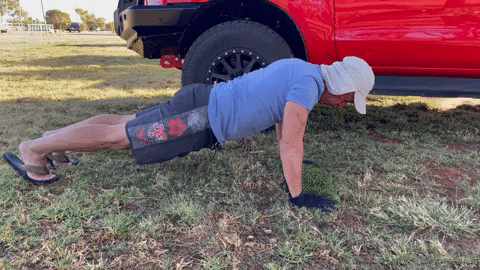
We are super-setting the chest with the lats so we go straight into the first lat exercise which is the single arm band pull-in. This exercise is the optimal lat movement as it pulls the lat insertion towards the origin in the direction of the majority of the muscle fibers. We focus our mind on the lats doing the work and pull the elbows back to minimize the bicep involvement. We often start a super-set with bands (or bodyweight), as the activation exercise, because the resistance is the least where the joint is most vulnerable.
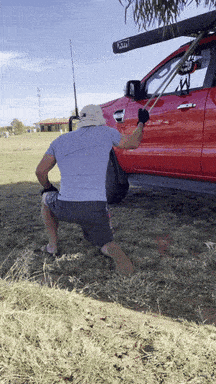
With super-sets, we move straight back to the chest with minimal rest and with a band chest press. The correct anatomical motion to engage the majority of the pectoral muscle fibers is with the hands starting high on the chest and a bit wider than shoulder width, then pushing down and across to meet just above the sternum. We focus our mind on the pecs doing the work to minimize the front deltoids and triceps involvement. The bodyweight pushups and the band chest press prime the pectorals and shoulders for the Unitree Pumps motorized cable resistance.
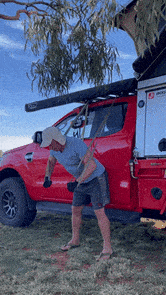
One of the benefits of super-sets is while you work one muscle group the other is resting. This minimizes workout duration while providing a cardio challenge without overstressing the central nervous system. We move straight back to a full range single arm lat pull-in set with the Unitree Pump motorized cable that provides constant resistance throughout the range of motion. We finish the lats with a 10 second rest/pause and a partial range stretch position speed set
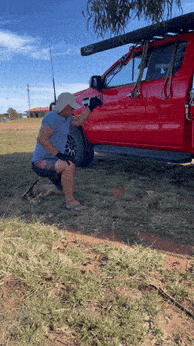
We super-set back to the chest press with the Unitree Pumps for a full range set and finish with a 10 second rest/pause and a partial range of motion speed set in the stretch position. This is the final set of the Chest/Lats super-sets.
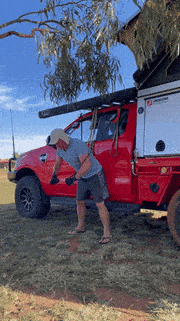
Become a Member to see how these exercises fit into our Routines.
Next Post
Stay tuned for the next post which will be a more comprehensive study on how we workout on the road while vehicle touring, camping and trekking.
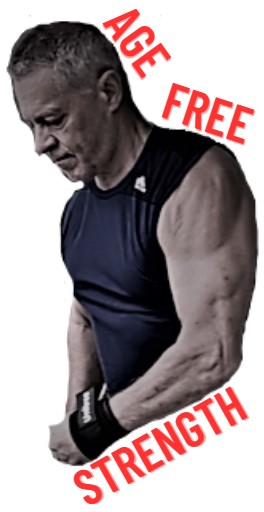
Very thorough. Thanks for the tips.
Thanks Austin, more to come
Thanks for sharing this informative post regarding Unitree Pump is really helpful when doing exercise anywhere
Thanks for sharing this informative post regarding Unitree Pump is really helpful when doing exercise anywhere.
Thanks for the comments Deepa. The Pumps really are brilliant. More posts coming up soon.